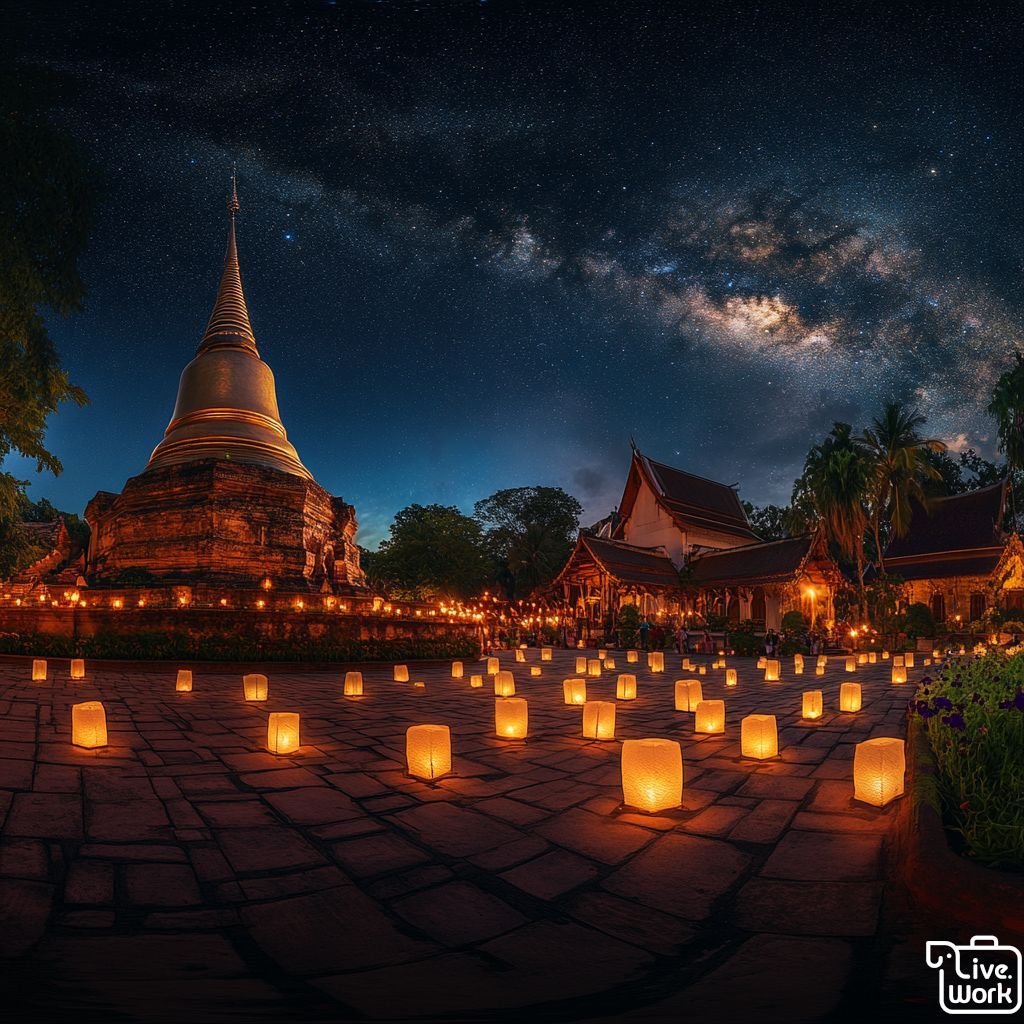The Temples of Thailand: A Sacred Journey Through Art, Spirit, and Time
Step beyond the bustling markets and lively streets, and you’ll find yourself in another realm—a world of gold-leaf stupas, serene lotus ponds, and the calming sound of temple bells. The temples of Thailand, or wats, are far more than tourist attractions. They are living testaments to the nation's spiritual heart, artistic brilliance, and enduring cultural identity.
To visit a Thai temple is to step into a space where history, devotion, and architectural mastery converge—and to glimpse the soul of the Thai people.
More Than Monuments: What Makes a Wat?
Thailand is home to over 40,000 temples, each one with its own story to tell. Some are quiet neighborhood sanctuaries. Others, like Wat Pho, Wat Phra Kaew, and Wat Arun, have become world-famous icons. Regardless of size or fame, every temple serves a purpose—as a place of worship, reflection, education, and community connection.
Temples are built following strict symbolic rules, where every detail—from the direction of the entrance to the shape of the chedi (stupa)—holds meaning. They're often surrounded by lush gardens, ornate gates, and spiritual murals that guide visitors through cycles of karma, rebirth, and enlightenment.
Must-See Temples and Their Stories
🛕 Wat Pho – The Temple of the Reclining Buddha (Bangkok)
Home to the giant golden Reclining Buddha, this temple is as spiritually significant as it is visually striking. Wat Pho is considered the birthplace of traditional Thai massage and medicine, and the temple grounds hold a wealth of ancient wisdom inscribed in stone tablets and reliefs.
Don’t miss: The echoing chamber of the Reclining Buddha, and the serene courtyards dotted with guardian statues.
🏯 Wat Arun – The Temple of Dawn (Bangkok)
Rising majestically along the Chao Phraya River, Wat Arun’s prang (spire) is covered in mosaic fragments of porcelain and seashells, catching the sunlight in dazzling ways. It’s named after Aruna, the Indian god of dawn, and sunrise and sunset here are spectacular.
Pro tip: Climb the steep steps for a panoramic view of the river and old Bangkok.
🏔 Wat Phra That Doi Suthep (Chiang Mai)
Perched on a mountain with sweeping views of Chiang Mai, this revered temple is reached by climbing 306 steps flanked by mythical Naga serpents. The golden chedi glows against the lush forest backdrop, and the temple is a site of pilgrimage for both locals and visitors.
Cultural note: According to legend, the temple’s location was chosen by a sacred white elephant sent by the king.
🌿 Wat Rong Khun – The White Temple (Chiang Rai)
A modern reinterpretation of the Thai wat, this dazzling structure is entirely white with embedded glass and surreal artistic details. Created by artist Chalermchai Kositpipat, it fuses Buddhist imagery with pop culture references, making it both controversial and captivating.
Expect the unexpected: Look for depictions of superheroes and global icons hidden among the murals.
The Living Heart of Thai Communities
Temples are not relics of the past—they are vital to daily Thai life. From morning alms to Buddhist holidays, temples are where people gather to celebrate, mourn, reflect, and give back.
As an expat or traveler, visiting a temple is a chance to observe and participate in these rhythms. Even just offering incense or joining a meditation session can provide a moment of peace and insight—and a connection to the deeper values that shape Thai society.
Tips for Visiting Temples Respectfully
Dress modestly: Cover shoulders and knees; shoes must be removed before entering sacred buildings.
Stay quiet and calm: Respect the meditative atmosphere.
Don’t point your feet at Buddha images or monks.
Photography: Allowed in most areas, but not always inside the ordination halls—check for signs.
Temples as Cultural Mirrors
The artistry of Thai temples reflects the blending of Indian, Khmer, and indigenous Thai influences, fused over centuries into something uniquely Thai. From intricate mural paintings to towering stupas, temples are where spiritual and artistic excellence meet.
They’re also reminders of Thailand’s deep relationship with Buddhism, animism, monarchy, and myth—layers of culture woven into every statue, every lotus motif, and every echoing chant.
A Journey Within
Whether you're gazing up at a towering Buddha statue or listening to the rustle of robes as monks pass by, visiting temples in Thailand is a journey both outward and inward. It’s a way to learn, reflect, and find a moment of stillness in a world that often moves too fast.
